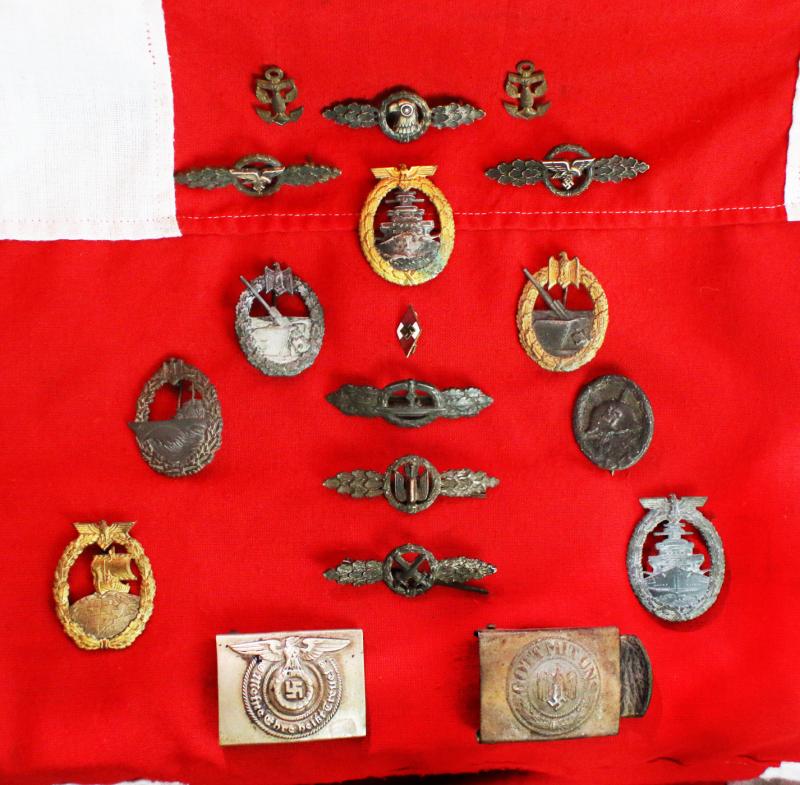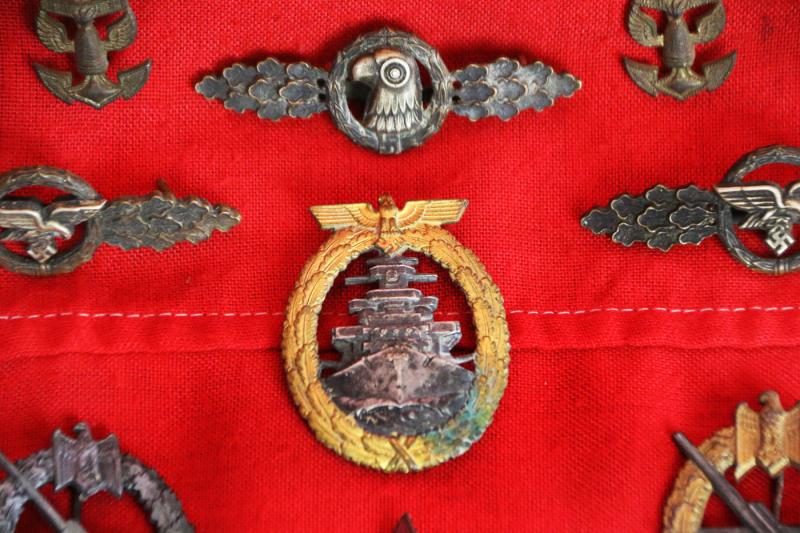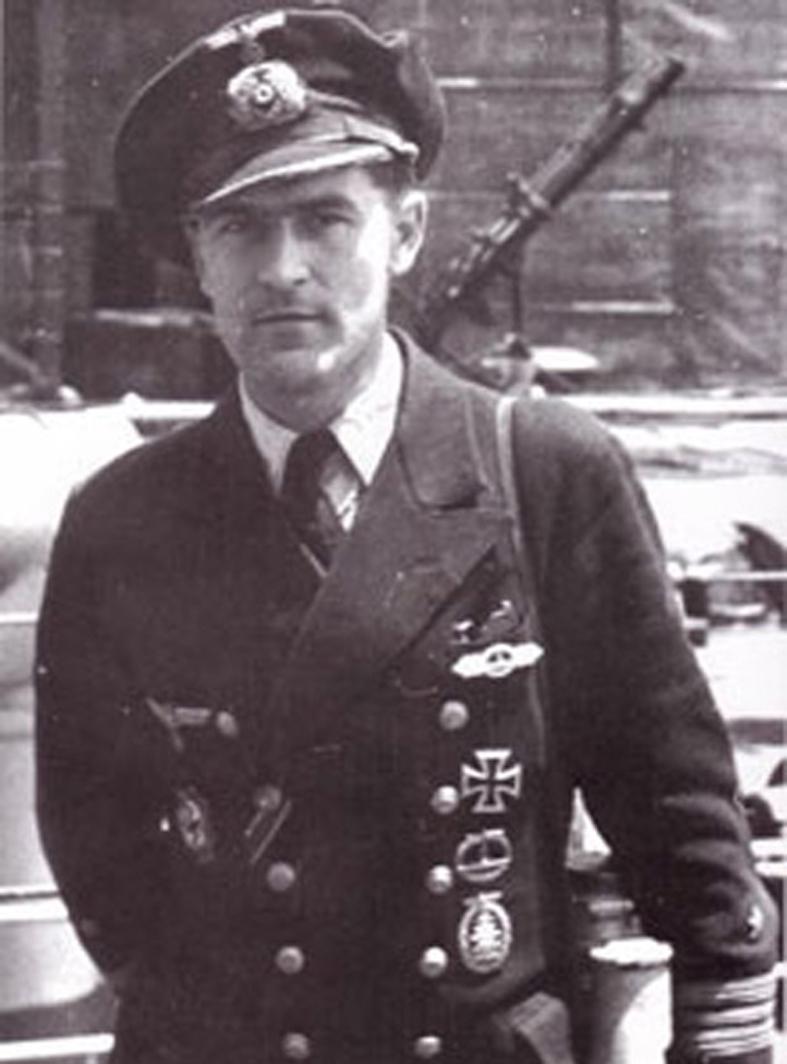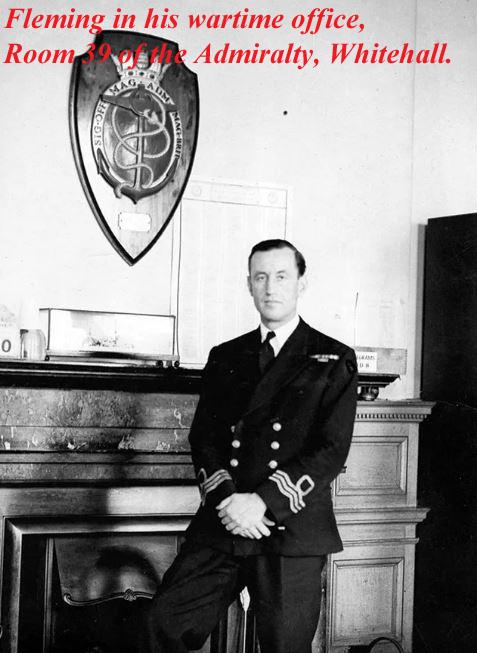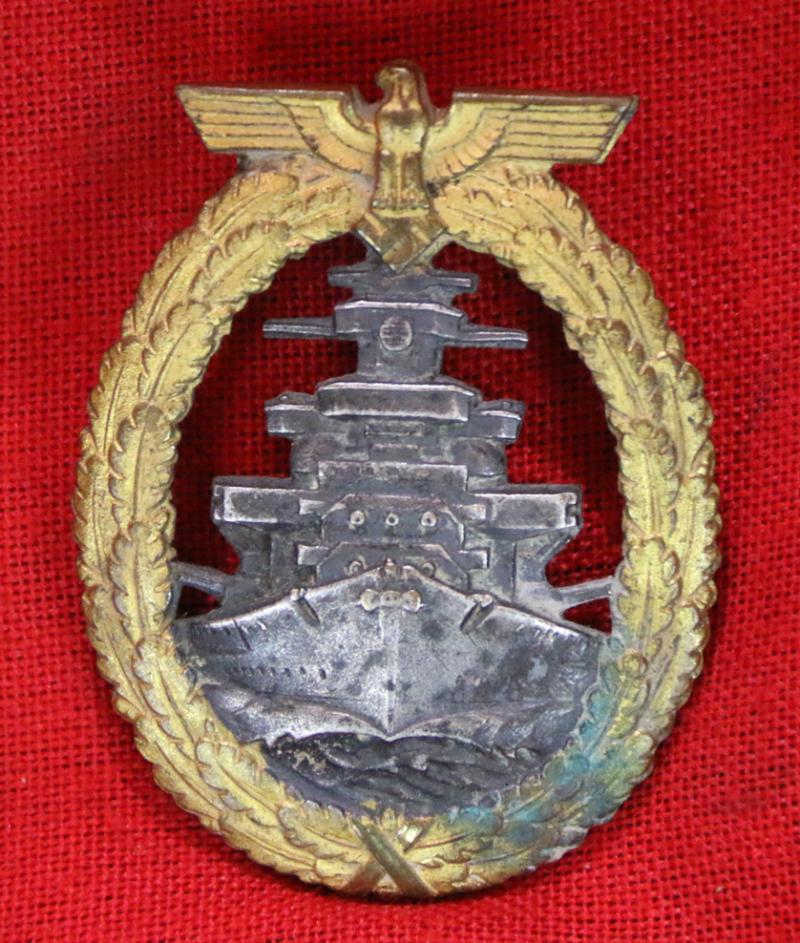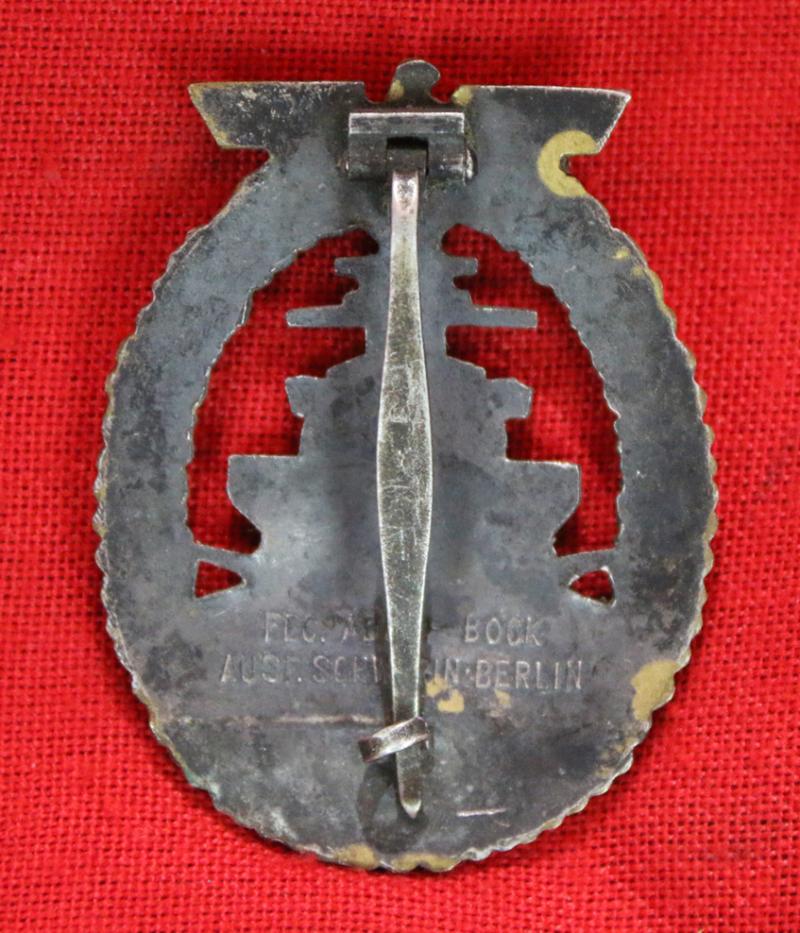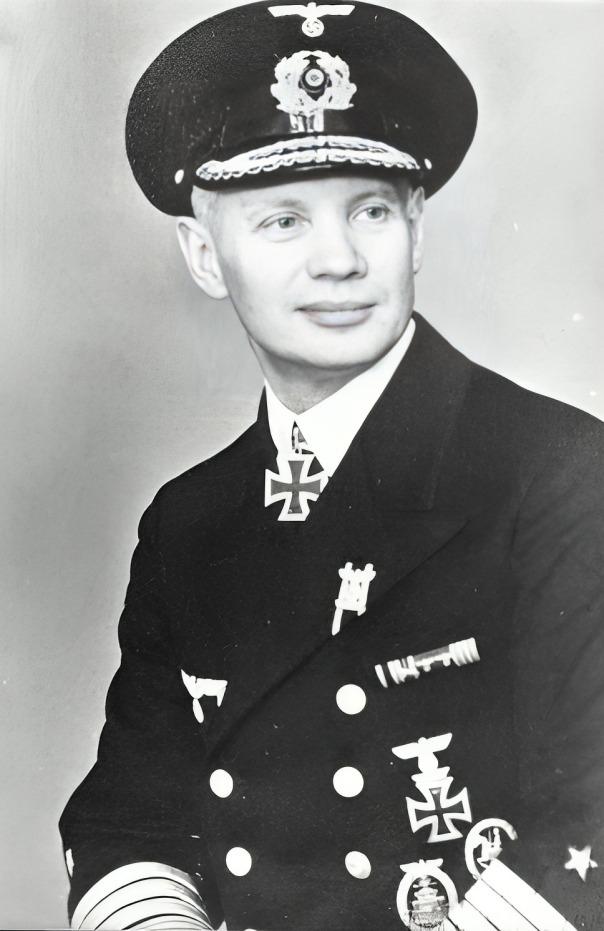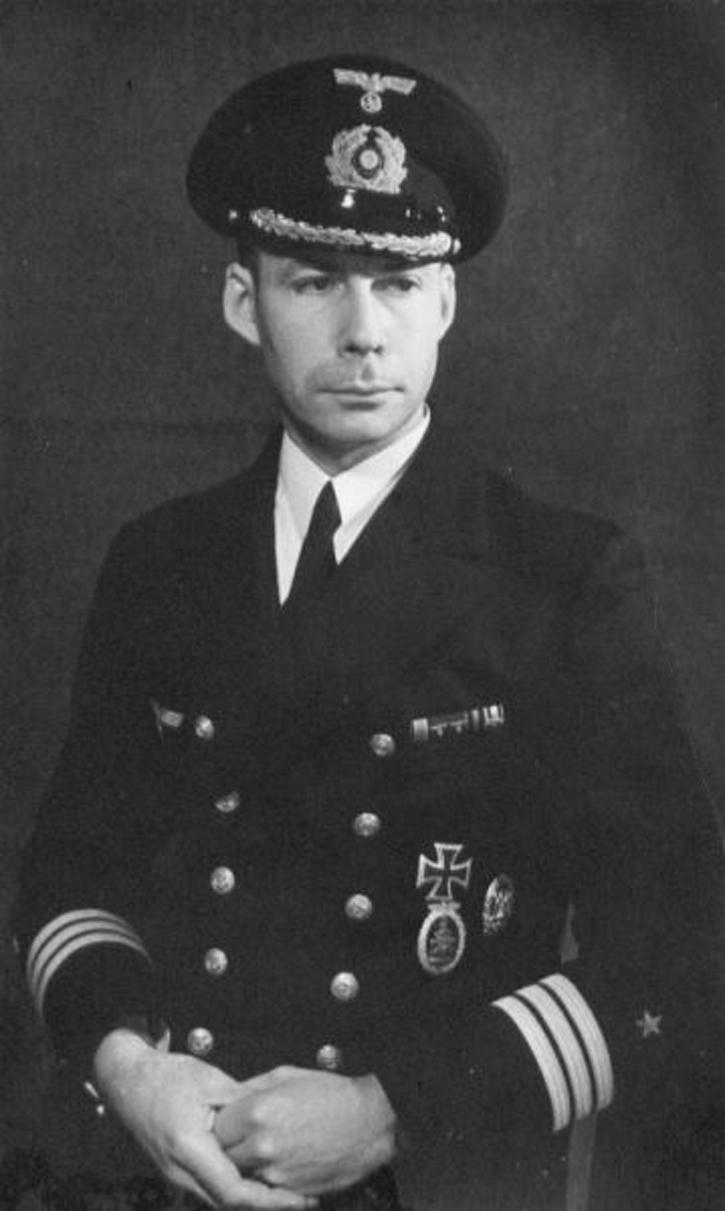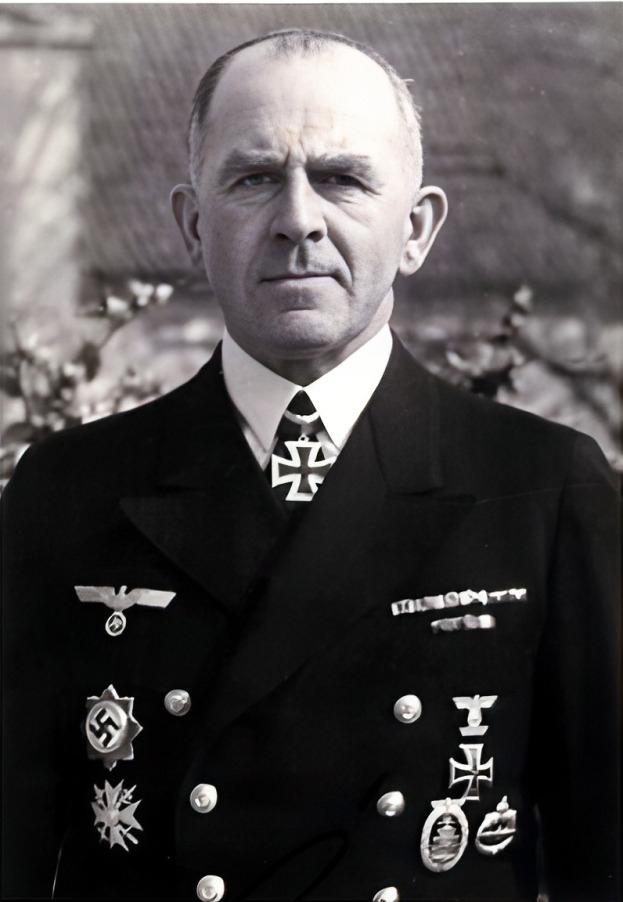A Superb & Early Kriegsmarine High Seas Fleet Badge by Adolf Bock Ausf Schwerin, Berlin {Flottenkriegsabzeichen} From One Of Ian Fleming’s Naval Intelligence Section’s So Called ‘Red Indians’ 30 Commando Special Engineering Unit
From an Interesting historical Collection Of Original German Third Reich Luftwaffe & Kriegsmarine Combat Badges & Awards & An SS & Army Buckle, Collected During WW2 By A 30 Commando British Bomb Disposal Officer. Untouched Since 1945, & Stored As Is For 80 Years. These ‘Red Indians’ commandos were mentioned twice in Ian Fleming’s first James Bond novel, Casino Royale, as an ‘honourable mention’ to Fleming’s secret service in Naval Intelligence in WW2.
Bomb disposal sections of special engineering units {Fleming’s so called ‘Red Indians} in wartime Europe were a vital part of clandestine warfare, and all parts of the units combat service were then trained in recognising enemy mines, booby traps, handling of explosives, demolitions, counter-demolitions, bomb disposal, and combined with recognition of enemy uniforms and equipment for intelligence gathering. Reporting all elements of their findings back to CoCO, and by them to the Admiralty. Fleming referred to such brave men as his ‘Red Indians’. see Casino Royale for reference.
KRIEGSMARINE HIGH SEAS FLEET BADGE BY ADOLF BOCK AUSF SCHWERIN BERLIN
A nice early Kriegsmarine High Seas Fleet Badge by Adolf Bock Ausf Schwerin, Berlin (Flottenkriegsabzeichen) constructed in tombac. The obverse of the badge has a nice gilt finish and patina with sharp detail. The reverse of the decoration has t
The maker’s mark “FEC. ADOLF BOCK AUSF. SCHWERIN BERLIN” complete with a vertical block hinge and flat wire catch. The badge has no damage or repairs in very good condition by desirable maker.
The design was created by the well known artist Adolf Bock of Berlin and the design was approved and adopted in 1941 by the then Grand Admiral Raeder, Commander in Chief of the German Navy. Although the award was instituted in 1941, awards could be rendered in retrospect of service from the beginning of World War II.
The brain child of naval commander Ian Fleming & Lord Louis Mountbatten, 30 Commando, this wartime unit was a secret well kept for over 50 years after the war by the Official Secrets Act, some remains classified. At the time, officially, they didn’t exist. The members of this unit were forbidden to discuss or document their activities, a pledge that many of the men kept even many years after the war was over, or even for their entire lives!
Due to the fact these men operated in very small groups on ‘need-to-know’ basis it is very difficult to get clear picture of everything they were doing.
Fleming’s/NID30AU secretary Miss Margaret Priestley (a history professor from Leeds University) played a vital role in the running and administration of 30AU and became his inspiration for Miss Petty Pettaval - the original character name that became Miss Moneypenny.
As revealed here for the first time! (see Beau Bête)
Miss Preistley transferred over to NID30AU during the winter of 1943-44 from DNR - (Department of Naval Research) where she worked as a civilian, although there were obvious links between DNR and NID30AU as intelligence on enemy targets was collected for Fleming’s ‘Black List’.
Also Known as: Fleming's 'Red Indians'
Fleming himself referred to the men of the unit as behaving like 'Red Indians'. (A reference he also used when referring to his character, James Bond, four times in his first novel Casino Royale. Which effectively makes this unit the ‘literary James Bond’s wartime unit’.)
Formerly:- (NID30 Command Office at Admiralty),
Special Engineering Unit.
'RED' Marines.
Latterly:- 30 Assault Unit,
30 Advanced Unit, 30AU
and incorrectly as 30th Assault Unit.
The number '30' was used for no better reason than it was NID/Miss Priestley’s Office Door number at the Admiralty. (Fleming’s Office was No. 39, see photo in the gallery of Fleming in room 39 of the Admiralty) 'Assault Unit' was 'overt' cover for the fact that they were intelligence gathering.
Date Founded: 30 September 1942
Date Disbanded: 26 March 1946
Date Reformed: February 2010 - 30 Cdo IXG
Mission When Founded:
The collection of technical intelligence and personnel from enemy headquarters and installations. Ahead of allied advances and before enemy could destroy it, to ‘Attain by Surprise’.
30 Commando consisted of Royal Marine, Army and Royal Navy elements that were organised into three Sections: No. 33, No. 34 and No.36 respectively. Initially code-named the Special Engineering Unit, the unit reported to the Chief of Combined Operations, though the Admiralty retained ultimate control of No.36 Section. No.35 Section was left vacant for the RAF to utilise but they never raised a troop to participate in 30 Cdo. Although they did supply intelligence officers and specific targets to pursue after D-Day for ‘Operation Crossbow’.
Unit members were given general commando skills and weapons training, and were then trained in recognising enemy mines, booby traps, handling of explosives, demolitions, counter-demolitions, recognition of enemy uniforms and equipment. Parachute training, small boat handling, recognition of enemy documents, search techniques including lock picking and safecracking, prisoner handling, photography and escape techniques were also taught.
A significant number of the initial recruits were formerly policemen. Although at least one ‘expert’ was recruited straight from prison, thought by the police to be the best safe-breaker in England at the time.
30 Cdo’s operational tactic was to move ahead of advancing Allied forces, or to undertake covert missions into enemy territory by land, sea or air, to capture intelligence, in the form of equipment, documents, codes or enemy personnel. 30 Cdo often worked closely with the Intelligence Corps' Field Security sections. More often than not each team consisted of two special operations Jeeps (As used by the SAS and 30AU) manned by one Naval Commander in possession of a ‘Black Book’ which listed targets from Ian Fleming’s famous ‘Black List’. The Naval Commander was the only man in each team who knew where and what the targets actually were. This Naval Commander was usually accompanied by at least one weapons expert or scientist who he relied on to evaluate the information or equipment they encountered. There were also usually at least six Royal Marines and one RM Officer whose main job was to do any fighting required and to keep the Naval Commander and any experts alive and out of trouble. (For details Reading section.)
The individual Sections served in all the Mediterranean and NW European operational theatres, usually operating independently, gathering information from captured facilities. The unit served in North Africa, the Greek Islands, Norway, Pantelleria, Sicily, Italy, and Corsica, 1942-1943 as 30 Commando.
As the Allies broke through 30AU split into many ‘Field Teams’ and these were responsible for capturing many and varied targets throughout Germany.
Team 2 under Curtis captured Prof. Helmut Walter, designer of the Me163 Rocket Plane and Midget Submarines at Kiel. (Kept by the British!).
Team 5 under USN Lambie captured Prof. Herbert Wagner (Handed to US Agents) designer of the guided flying bomb Hs293, already used to sink HMS Egret and to kill over 1000 troops on HMT Rohna. He went on to work for the US Navy. He did not surrender in Bavaria with Dornberger and the von Braun brothers as the Allied military would have us believe..
The capture of Prof. Magnus von Braun (Martin) V2 fuel chemist. (Handed to US Agents). He did not surrender in Bavaria as the Allied military want us to believe.
The capture of the designer of the Nazi V2 (who went on to the NASA Saturn V), Prof. von Braun and his brother. (Some men were convinced they were some of the scientists they caught!) Did they surrender in Bavaria as the Allied military want us to believe or was that staged afterwards? (see Beau Bête for details and FREE preview PDF, in Reading)
Team 55 under Glanville captured the entire Nazi Naval records collection at ‘Tambach Castle’.
Team 4 under Job(e) captured the Bremen dockyards with type 21; 25 submarines and destroyers. Then took the surrender of Bremerhaven and captured Naval HQ SS Europa and Z29 Destroyer. (All handed over to US Agents).
Team 2 Postlethwaite captures the Torpedo testing facility at Ekenförde.
Another team captured Admiral Dönitz (as Führer).
And many other things yet to be revealed by the government!
Ref; https://www.30au.co.uk
An amazing historic collection of information, including. https://www.amazon.co.uk/Beau-B%C3%A9te-assigned-Flemings-intelligence/dp/B08R7XYHXW
Photos in the gallery of;
Fleming in his wartime office, Room 39 of the Admiralty, Whitehall.
Admiral Otto Ciliax
Generaladmiral Oskar Kummetz
Fregattenkapitän Ernst Dominik
All the above Kriegsmarine officers are wearing the High Seas Fleet Badge.
Code: 25708
995.00 GBP

